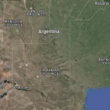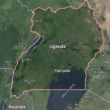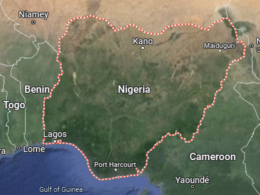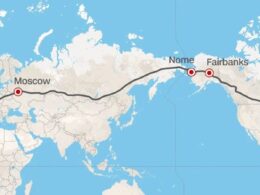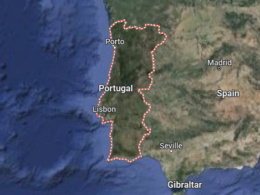Library of Alexandria Once the world’s largest library, the Library of Alexandria was a center of knowledge and scholarship in ancient times.
Coptic Christianity Egypt is home to one of the oldest Christian communities in the world, the Copts, who have their own unique language and liturgy.
Aswan High Dam The construction of the Aswan High Dam created Lake Nasser, one of the largest artificial lakes in the world.
Mastaba Tombs Before pyramids, ancient Egyptians built mastaba tombs, flat-roofed structures with sloping sides.
Catacombs of Kom El Shoqafa Located in Alexandria, these catacombs combine Egyptian, Greek, and Roman architectural styles.
Nubian Culture The Nubians, an ethnic group in southern Egypt, have a distinct culture, language, and architecture.
Sun Temples Pharaohs of the 5th Dynasty built sun temples dedicated to the sun god Ra, with only two discovered so far.
Mummified Animals Egyptians mummified not only humans but also animals like cats, dogs, birds, and even crocodiles.
The Valley of the GolMummies, discovered in Bahariya Oasis, contains thousands of mummies from the Greco-Roman period.
Fayoum Oasis, known for its fertile land and ancient history, houses the ruins of the ancient city of Karanis.
Merimde Culture is one of the earliest known cultures in Lower Egypt, dating back to around 5000 BCE.
White Desert Known for its surreal landscapes, the White Desert is filled with chalk rock formations shaped by wind erosion.
The Siwa Oasis, famous for its unique Berber culture, is known for its natural springs and ancient ruins.
Monastery of St. Catherine Located in the Sinai Peninsula, it is one of the oldest working Christian monasteries in the world.
Amarna Period A brief era in ancient Egyptian history when Pharaoh Akhenaten established a monotheistic religion worshipping the sun disk Aten.
Heliopolis, an ancient city dedicated to the worship of the sun god Ra, is now a suburb of Cairo.
The Rosetta Stone, discovered in 1799, helped scholars decipher Egyptian hieroglyphs and is currently housed in the British Museum.
El-Lahun is a pyramid and worker’s village built by Pharaoh Senusret II in the Faiyum region.
Meroitic Script The script used by the Kingdom of Kush in Nubia, still largely undeciphered.
Abydos, an ancient city considered one of the most important archaeological sites in Egypt, is home to the Temple of Seti I.
Medinet Habu, a massive temple complex in Luxor built by Ramesses III, is known for its well-preserved reliefs.
Dendera Temple Complex Dedicated to Hathor, the goddess of love, music, and joy, it includes one of the best-preserved temples in Egypt.
Gebel el-Silsila, a major quarrying site along the Nile, was used throughout Egyptian history.
Elephantine Island Ais anisland in the Nile with archaeological sites dating back to the pre-dynastic period.
Serapeum of Saqqara An underground tomb complex for the Apis bulls, considered sacred animals.
Meidum Pyramid An early step pyramid later transformed into a true pyramid, attributed to Pharaoh Sneferu.
Wadi El Hitan, known as the Valley of the Whales, contains fossil remains of the earliest, now extinct, suborder of whales.
Temple of Hibis is the largest and best-preserved temple in the Kharga Oasis, dating from the Persian period.
Pyramid Texts The oldest known religious texts in the world, inscribed in the pyramids of the Old Kingdom.The
Hanging Church is one of the oldest churches in Egypt, located in Coptic Cairo and built on the remains of Roman fortifications.
Solboatsats were discovered near the Great Pyramid, these boats were believed to carry the pharaoh’s soul to the afterlife.
Rosetta City, famous for the discovery of the Rosetta Stone, has many well-preserved Ottoman-era buildings.
Temple of Edfu Dedicated to the falcon god Horus, it is one of the best-preserved ancient temples in Egypt.
Bir Tawil is a unique area of land between Egypt and Sudan that is unclaimed by either country.
Tanis, an ancient city that served as a capital in the Third Intermediate Period, is known for its royal tombs.
The Blue Hole is a famous diving location in the Red Sea near Dahab, known for its marine biodiversity and challenging dive conditions.
Mokattam Hills, located in Cairo, are known for the Cave Church and panoramic views of the city.
The Temple of Esna, dedicated to the god Khnum, is known for its detailed astronomical ceiling and inscriptions.
Sphinx of Memphis A large alabaster sphinx located in the ancient capital of Memphis.
Deir el-Medina is a village for the workers who built the royal tombs in the Valley of the Kings.
The tomb of Nefertari, Known for its stunningly preserved wall paintings, belongs to the wife of Pharaoh Ramesses II.
Marsa Alam is a town on the Red Sea coast known for its pristine coral reefs and marine life.
Nabta Playa is a prehistoric archaeological site in the Nubian Desert with some of the earliest known astronomical alignments
Templeple of Kalabmoved moved to its current location to avoid flooding from the Aswan High Dam, It is dedicated to the Nubian god Mandulis.
Qasr Ibrim is the only major archaeological site in Lower Nubia to have survived the creation of Lake Nasser.
Philae Temple, dedicated to the goddess Isis, was relocated to Agilkia Island to save it from flooding.
The Temple of Kom Ombo is uniquely dedicated to two gods, Sobek and Horus, and known for its symmetrical design.
Cave Church of St. Simon, located in the Mokattam Hills, is the largest church in the Middle East.
Saqqara Bird An is an ancient artifact that some believe to be an early model of a glider or airplane.
Shali Fortress: An ancient mud-brick fortress in the Siwa Oasis, offering panoramic views of the oasis.
Temple of Hathor at Serabit el-Khadim: An ancient turquoise mining site in the Sinai Peninsula with a temple dedicated to Hathor.
Colossi of Memnon two massive stone statues of Pharaoh Amenhotep III, located near Luxor.
Saint Catherine’s Monastery Library holds one of the largest collections of early manuscripts and codices in the world.
San El-Hagar is the site of the ancient city of Tanis, with impressive ruins including temples and royal tombs.
Gayer-Anderson Museum Located in Cairo, this museum is housed in a well-preserved 16th-century mansion.
Siwan House Museum showcases traditional Siwan culture, artifacts, and crafts.
El Alamein is the site of a major World War II battle, with memorials and cemeteries for soldiers from various countries.
The Red Pyramid, built by Pharaoh Sneferu, is the third-largest pyramid in Egypt and the first successful smooth-sided pyramid.
Dahshur An ancient pyramid complex that includes the Bent Pyramid and the Red Pyramid.
The Black Desert is known for its unique volcanic hills covered with black basalt.
Wadi al-Hitan Museum showcases the fossils of early whales and marine life found in the Valley of the Whales.
Tomb of Petosiris Located in Tuna el-Gebel, this tomb combines Egyptian and Greek artistic styles.
Akhmimis known for its ancient temples and as the birthplace of the female Pharaoh Sobekneferu.
Karanis is an ancient Greco-Roman city in the Faiyum, with well-preserved ruins and artifacts.
Beni Hasan is an ancient Egyptian cemetery site with rock-cut tombs dating to the Middle Kingdom.
El-Bagawat One of the oldest Christian cemeteries in Egypt, located in the Kharga Oasis.
Al-Hakim Mosque is a historic mosque in Cairo known for its distinctive minarets and Fatimid architecture.
Gebelein Predynastic Mummies are some of the oldest mummies ever discovered, dating back to around 3400 BCE.
St. Simeon Monastery is an ancient monastery near Aswan, dating back to the 6th century.
Wadi Hammamat is an ancient quarrying site with numerous petroglyphs and inscriptions.
Cairo Geniza A collection of Jewish manuscript fragments found in the attic of the Ben Ezra Synagogue in Cairo.
Temple of Montu Located in Armant, this temple is dedicated to the war god Montu.
Zawyet el-Aryan is an archaeological site with two unfinished pyramids and numerous tombs.
Temple of Khnum at Esna Known for its detailed ceiling depicting astronomical scenes.
Talatat Blocks are small blocks of stone used in the construction of Akhenaten’s city of Amarna.
Naqada Culture is a prehistoric culture that existed in Upper Egypt before the formation of the first dynasties.
Minya Known for its ancient ruins, including the tombs at Beni Hasan and the city of Amarna.
Amphitheater of KEl-Dikka, a Roman amphitheater in Alexandria, is used for various performances.
Catacombs of Kom El Shoqafa, an underground necropolis in Alexandria that combines Egyptian, Greek, and Roman styles.
Nuweiba is a coastal town on the Sinai Peninsula, known for its beautiful beaches and coral reefs.
**Please note that this post may contain affiliate links. When booking through one of our links, we earn a small kickback at no extra cost to you and it’s a big help to keep the site up and running.



